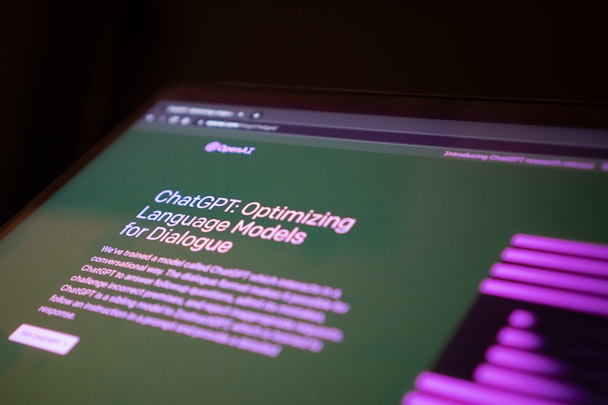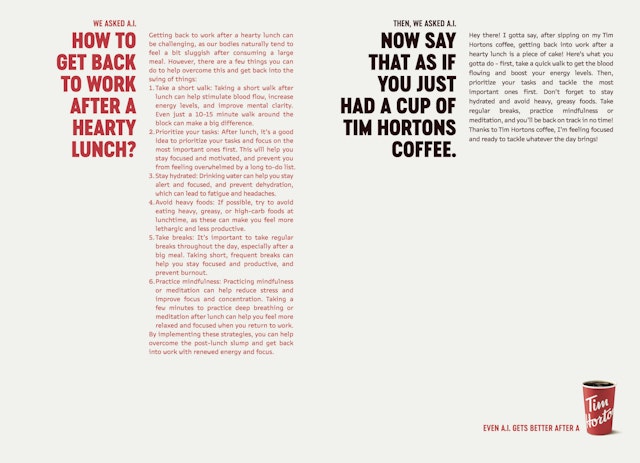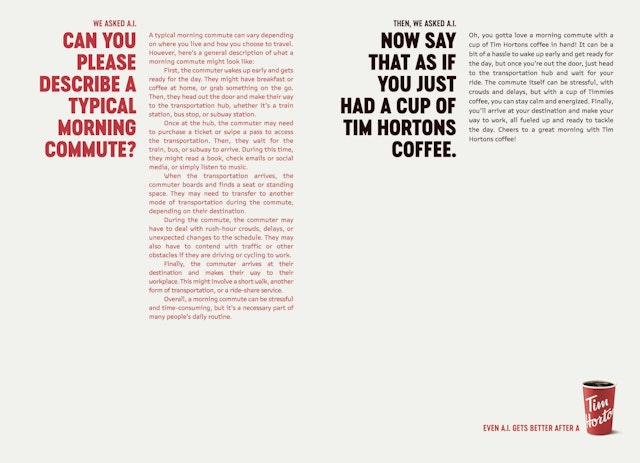ChatGPT opened the doors to gen AI. Has it actually been useful for creative agencies?
As we review how agencies utilize generative AI tools in their day-to-day work, Gut talks us through how it put ChatGPT to work on a Tim Horton’s campaign.

Gut Toronto has landed on a handful of practical uses for ChatGPT / Unsplash
ChatGPT is a generative AI text tool developed by OpenAI, a tech company backed by Microsoft. Though its apps weren’t the first generative AI tools widely available or the first to be adopted by the ad industry – Dall-E and ChatGPT opened the floodgates late last year. The latter was accessible enough to encourage laypeople to experiment and experts to probe the outer limits of a text-based generative AI.
“Before ChatGPT, nobody would even mention AI unless they were a data scientist,” says creative agency Gut’s Christian Pierre. “I used to lead a data science team at my previous shop, R/GA, in which we did very good projects – projects no one understood because it was too complex to explain. Now people aren’t questioning how it works; it just does.”
In basic terms, users enter a prompt – a string of text – into a dialogue box and the app generates a response pulled from an enormous corpus of written language called a large language model (LLM). The tech behind ChatGPT is used to power Microsoft’s AI search assistant in Bing.
Currently, there’s a free version that generates responses using a dataset based on information scraped from the web as it was in 2021. And there’s the more up-to-date ChatGPT Plus, which costs $20 a month and can run searches on the contemporary internet.
Advertisement
Many users hoped the tool might alleviate some of the stresses of modern work. Non-writers could pen legible English; those besieged within their Outlook might actually be able to reach inbox zero; creatives afflicted by writer’s block could use it to bounce ideas off or ask for hundreds of synonyms or phrase variations to iterate a line of copy.
Advertisement
But given the severity of the ‘hallucinations’ – the term coined for the frequent, egregious fabrications that the tool presents as certain fact – the practical value of the tool in agency work has been in doubt.
“ChatGPT has these hallucinations because it is a generative tool; if it doesn’t have the answer, it will come up with something close to the answer and it might be bullshit,” explains Pierre.
Once the severity of that issue emerged, the team turned to other tools for research and now reserve ChatGPT for internal use only or as a creative aid.
“Let’s say you need to fill a new position. It will give you a very decent job description that you can, of course, improve. But there are lots of tasks that used to take time that are now basically super fast,” he says.
Suggested newsletters for you
Errors are not the only drawback. ChatGPT is currently the subject of a class-action copyright suit brought by comedian and author Sarah Silverman, while just today, it was reported that The New York Times was considering suing the tech firm for breaching its copyright. Both cases could have severe repercussions for the company behind the tool and those integrating it into their businesses.

Pierre says Gut’s creative team staged a ‘mapping’ exercise to divine which third-party tools were available and which were actually useful. He wanted to help colleagues across the business – in accounts, client services, as well as in digital and creative specialisms – to benefit without having to put hours and hours of trial and error in. “In a few years, if you don’t do your homework, it is going to be hard for you to find a job. With AI, everyone is going to work faster – so if you’re not using it, you’re not going to be able to keep up.”
Back when ChatGPT was still a novelty to consumers – just a few months ago – the agency actually created an entire campaign for key client Tim Horton’s around the tool. The piece hinged on the tool’s ability to rewrite copy with a different tone of voice and on the fact that its exposure to the web means it can incorporate an understanding of brand semiotics into its responses.

Brynna Aylward, executive creative director at Gut Toronto, explains how Gut made the campaign. “For ’CaffeinAIted,’ we showed what would happen if AI drank a cup of coffee. We asked ChatGPT to tell us about a subject and then asked it to tell us about the same subject as if it just drank a cup of Tim Hortons coffee. Responses were more friendly, succinct and clear, mirroring the better mood and increased focus that coffee creates in humans.
“From the very first response, ChatGPT was more direct, friendlier and more concise, but we used the regenerate function to get the best answers.”
For Pierre, the work was a success. “It was a very simple idea that we created, tested and sent to out-of-home. And it went to Cannes. My take is that everything entered at Cannes will have an AI component next year.”

